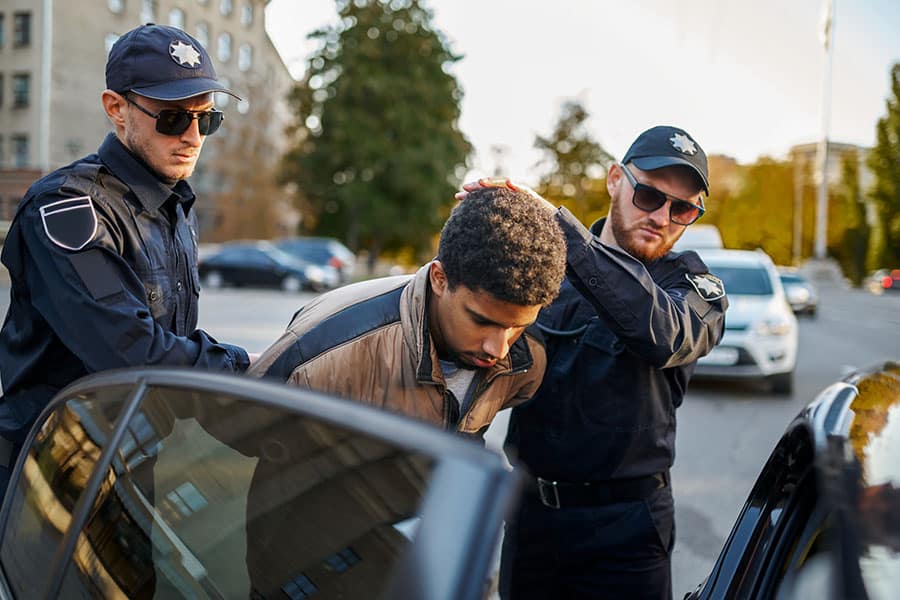If you’ve experienced excessive force by law enforcement, you could be entitled to reparations. But there are several legal hurdles to prove police excessive force. We’ve compiled a list of everything you need to know for an excessive force case.
What Is Excessive Force?
Excessive force is the use of unnecessary force or violence by law enforcement.
Police officers are allowed to use force, even deadly force, to get suspects to comply. But any force used beyond what is warranted by the situation is considered excessive. Using an unnecessary amount of force is considered a civil rights violation.
Get Legal Representation Right Away
Anyone who has been subject to excessive force should seek legal counsel immediately.
Excessive force violates the Constitutional Fourth Amendment protections against search and seizure and unnecessary cruel and unusual punishment. Because police brutality cases are Constitutional rights cases, experienced civil rights attorneys are the best option for police brutality cases. If your attorney thinks your case is worth pursuing, they’ll likely recommend that you file a civil lawsuit.
Burdens of Proof in Civil Lawsuits
Excessive force claims are civil suits, so the burden of proof is on the plaintiff. If you are pursuing a civil rights case against law enforcement, it falls on you to provide enough evidence for the court to determine that your civil rights were violated.
However, the burden of proof is also lower in civil cases. In most courts, plaintiffs only have to provide a “preponderance of evidence” rather than prove “beyond a reasonable doubt,” which is the requirement in criminal cases.
Some courts have a higher threshold. In these courts, you’ll need to provide “clear and convincing evidence,” which is a slightly higher bar than a preponderance of the evidence. Discuss with your attorney what burden of proof your case needs to meet.
How Do You Prove Excessive Force?
Since police officers are allowed to use force when necessary, proving that excessive force was used can be subjective. While police have guidelines for what amount of force to use in different situations, force is deemed excessive in court on a case-by-case basis. You’ll need to convince a judge and jury that the amount of force used was unnecessary and unwarranted.
That’s not to say that there are no rules around when law enforcement can use force. Police can use force when a suspect is resisting arrest or fleeing, and can use additional force when the suspect appears to have committed a felony.
There are even more rules around the use of deadly force. Law enforcement officers can only use deadly force when the suspect poses a serious threat to themselves or others or when they are apprehending a suspect who appears to have committed a felony that involved serious injury or death.
Gather As Much Evidence As Possible
To prove an excessive force case you’ll need evidence. Because the rules around how much force police can use depends on the circumstance, you’ll want to provide evidence of the circumstances leading up to your arrest. This can be proof that you were suspected of a non-violent crime or if it was unreasonable for police to consider you a suspect at all.
The plaintiff will also want to provide additional documentation of how much force was used, such as medical records or expert testimony. Video evidence or body camera footage can also go a long way to strengthen your case. If the officer has a history of misconduct accusations, obtain the officer’s police department record. Your attorney will help you to gather the evidence you need for your case.
Federal Civil Enforcement
There are several federal laws and statutes that protect individuals against excessive force. A majority of lawsuits against law enforcement use the Civil Rights Act. In cases involving the Civil Rights Act, the plaintiff claims that an officer’s use of excessive force violated their constitutional rights, under the Fourth Amendment, because of police discrimination. To use the Civil Rights Act, the plaintiff must be able to prove that law enforcement discrimination took place on the basis of race, color, national origin, sex, or religion.
“Police Misconduct Provision”
The Police Misconduct Provision provides additional protections against police brutality. It makes it unlawful for police to engage in a pattern of behavior involving misconduct. Unlike most civil cases, proof that discrimination was at play is not needed. However, changes under the Police Misconduct Provision cannot be brought by an individual, suits can only be filed by the Department of Justice.
Qualified Immunity: Protection for Officials
One of the largest hurdles that police brutality and excessive force cases need to overcome is qualified immunity. Qualified immunity protects police against liability for civil rights violations if they did not violate a plaintiff’s rights. This protection is often used by law enforcement officers who have been accused of misconduct while on the job.
Overcoming the Qualified Immunity Defense
The qualified immunity defense offers additional protections for police officers, but it can be overcome. Proving that your rights were violated by the use of excessive force will prevent an officer from using a qualified immunity defense.
